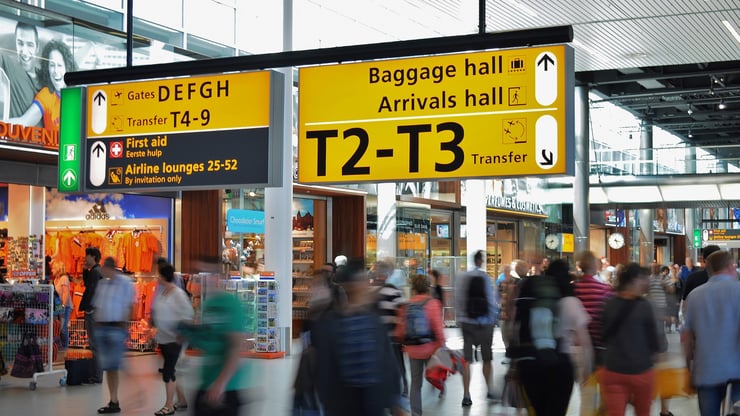NZ a Launchpad? Half Of Kiwis Applying For Aussie Citizenship Born Abroad

A growing number of New Zealand citizens applying for Australian citizenship were not born in the country, raising questions about whether New Zealand is becoming a stepping stone for migrants aiming to settle in Australia, RNZ has reported.
According to figures released by Australia’s Department of Home Affairs, more than 92,000 New Zealand citizens applied for Australian citizenship between July 2023 and June 2025. Of those applicants, 48 percent were born outside New Zealand.
The sharp increase follows changes to Australia’s citizenship pathway in July 2023, which allows New Zealanders on a Special Category Visa (SCV) to apply directly for citizenship after four years of residence, bypassing the need for permanent residency. Nearly all New Zealanders are eligible for an SCV upon arrival, and there is no cap on the number issued.
Stats NZ also noted that migrants born overseas have made up a growing share of New Zealand citizens moving to Australia since the early 2000s. In 2024 alone, nearly 30,000 New Zealanders migrated across the Tasman — the highest figure in over a decade — and 35 percent of them were born outside the country.
Emeritus Professor Richard Bedford, a population geographer, told RNZ that New Zealand was simultaneously experiencing a net loss of citizens to Australia and a significant net gain of migrants from other countries. He noted it was a misconception that those migrating to Australia were more skilled than the migrants New Zealand received.
According to Bedford, the real challenge lay in retaining skilled talent, RNZ reported. He stressed the need to ensure that migrants received fair pay and meaningful employment, and said lifestyle, community, and housing access were equally important in encouraging migrants to stay.
He also pointed to professional accreditation bodies in New Zealand, such as medical or engineering boards, as barriers to skilled migrants entering the workforce. He said it was important not to invite migrants if they were unable to work in their field.
Bedford, who has studied migration patterns since the 1960s, said it was difficult to measure whether more people were using New Zealand as a pathway to Australia, but the country needed to focus on making itself a desirable long-term destination.
Emeritus Professor Jacques Poot, a population economist at the University of Waikato, told RNZ that the two countries had long operated as interconnected labour markets, but New Zealand typically came out on the losing side due to Australia's larger economy and higher wages.
Poot said it was inaccurate to assume migrants always planned to leave, as people migrated for many different reasons. He suggested reviewing New Zealand’s residency pathways and improving wage competitiveness to help retain migrants.
He also emphasised that the narrative of a mass departure was exaggerated. While recent numbers are high in absolute terms, he said they do not surpass historic migration flows when measured against population size.
A growing number of New Zealand citizens applying for Australian citizenship were not born in the country, raising questions about whether New Zealand is becoming a stepping stone for migrants aiming to settle in Australia, RNZ has reported.
According to figures released by Australia’s Department...
A growing number of New Zealand citizens applying for Australian citizenship were not born in the country, raising questions about whether New Zealand is becoming a stepping stone for migrants aiming to settle in Australia, RNZ has reported.
According to figures released by Australia’s Department of Home Affairs, more than 92,000 New Zealand citizens applied for Australian citizenship between July 2023 and June 2025. Of those applicants, 48 percent were born outside New Zealand.
The sharp increase follows changes to Australia’s citizenship pathway in July 2023, which allows New Zealanders on a Special Category Visa (SCV) to apply directly for citizenship after four years of residence, bypassing the need for permanent residency. Nearly all New Zealanders are eligible for an SCV upon arrival, and there is no cap on the number issued.
Stats NZ also noted that migrants born overseas have made up a growing share of New Zealand citizens moving to Australia since the early 2000s. In 2024 alone, nearly 30,000 New Zealanders migrated across the Tasman — the highest figure in over a decade — and 35 percent of them were born outside the country.
Emeritus Professor Richard Bedford, a population geographer, told RNZ that New Zealand was simultaneously experiencing a net loss of citizens to Australia and a significant net gain of migrants from other countries. He noted it was a misconception that those migrating to Australia were more skilled than the migrants New Zealand received.
According to Bedford, the real challenge lay in retaining skilled talent, RNZ reported. He stressed the need to ensure that migrants received fair pay and meaningful employment, and said lifestyle, community, and housing access were equally important in encouraging migrants to stay.
He also pointed to professional accreditation bodies in New Zealand, such as medical or engineering boards, as barriers to skilled migrants entering the workforce. He said it was important not to invite migrants if they were unable to work in their field.
Bedford, who has studied migration patterns since the 1960s, said it was difficult to measure whether more people were using New Zealand as a pathway to Australia, but the country needed to focus on making itself a desirable long-term destination.
Emeritus Professor Jacques Poot, a population economist at the University of Waikato, told RNZ that the two countries had long operated as interconnected labour markets, but New Zealand typically came out on the losing side due to Australia's larger economy and higher wages.
Poot said it was inaccurate to assume migrants always planned to leave, as people migrated for many different reasons. He suggested reviewing New Zealand’s residency pathways and improving wage competitiveness to help retain migrants.
He also emphasised that the narrative of a mass departure was exaggerated. While recent numbers are high in absolute terms, he said they do not surpass historic migration flows when measured against population size.









Leave a Comment